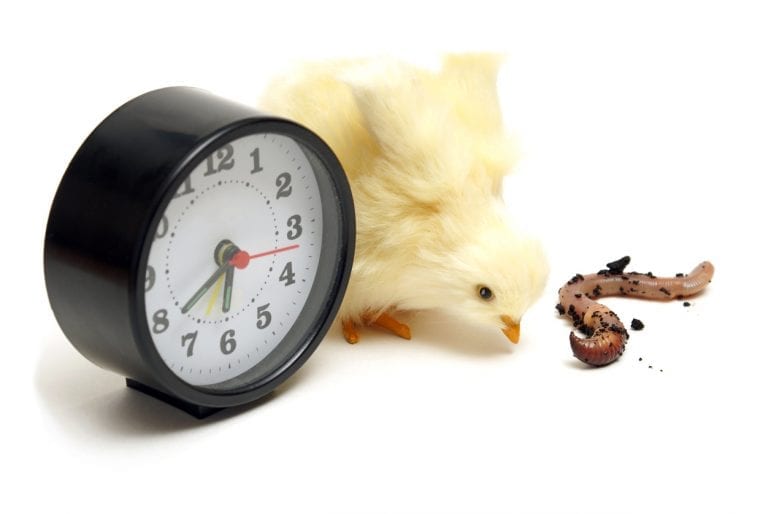
Now that the new tax year has started, people often ask us whether they should use their Individual Savings Account (ISA) tax allowance early, or wait until the end of the year? While many people leave it to the last minute, there are several reasons why it makes sense to invest early instead.
There is nothing like a hard deadline to focus the mind. It’s why tax year-end has traditionally been the busiest time of year for financial planners, as we work with clients to ensure they make the most of any available tax allowances. One area that is always busy for us is helping people with their ISA subscriptions.
ISAs have become one of the most important building blocks for anyone looking to invest for their future. After all, ISAs allow you to shelter any investment gains or interest earned from the taxman, which means any money held within the ISA wrapper has the potential to grow more quickly.
As a reminder, you can save up to £20,000 annually into an ISA in each tax year. This limit applies to Stocks and Shares ISAs, Cash ISAs, and Innovative Finance (also known as peer-to-peer) ISAs, so there are plenty of options to choose from, and you can spread your ISA allowance between different ISA types. But ISA allowances operate on a ‘use it or lose it’ basis. In other words, if you do not make an ISA investment during a particular tax year, you cannot ‘roll-over’ the allowance to the next one. So, it makes sense to leave using up your ISA allowance at the very last minute, rather than to not use it at all.
Human nature being what it is, lots of people leave it until the last minute (11.59 on 5 April, to be precise) to get their ISA application completed. And then they tend to forget about their ISA for 12 months before repeating the process all over again.
Many people make the mistake of leaving their ISA investment until the end of March, perhaps because they are focused more on the tax benefits associated with an ISA, instead of thinking about it as an investment vehicle. While there is a strong temptation to wait, knowing that you have a full year to make the most of your ISA allowances, it is important to remember that investments need time to grow, so the more time you give them, the better the potential outcome.
As an example, this year the FTSE 100 index is expected to generate an average dividend yield of 3.8%, which is an improvement on last year’s historic yield of 3.2%. If you hold off investing until close to the end of the tax year, your investment has missed out on a whole year of tax-free income. More importantly, your ISA will also be missing out on the potential of tax-free growth on the value of the shares in your ISA portfolio. Growth cannot be guaranteed, of course, but the theory is that the more time you leave your ISA invested, the longer it has to potentially grow, and the larger your investment pot will ultimately be.
Starting your investment sooner means you could boost your overall ISA pot in the longer term, but not everyone is able to invest the full £20,000 ISA allowance at the beginning of every new tax year. So, instead of investing the whole amount into your ISA at the last possible minute, you might want to consider spreading regular amounts across the 12 month-period instead. Investors call this ‘pound-cost averaging’ because paying in regular amounts reduces the overall volatility of your investment.
How does pound-cost averaging work? Well, imagine if you pay £20,000 into your ISA in March, just before the tax year end. That money will be used to invest in different funds or stocks and shares at a set date in March when your investment will be subject to how overall stock markets are performing at that point in time. If valuations are high at that point, you will end up paying more for your investments than you would have had you invested at a different time.
It can be particularly painful to invest a large amount into your ISA, only to see stock markets take a tumble soon after, which means your investment is already in negative territory. ‘Timing the market’ is very difficult to get right. But by paying into your ISA regularly, using your regular amounts to purchase assets at different times and at different prices, you eliminate the possibility that the whole value of the ISA subscription will be bought when markets are at their peak. It is a simple way of taking the guesswork out of investing, avoiding uncomfortable market highs and lows, and spreading the risk out over a full year instead.
One final point to remember is that using your ISA allowance at the beginning of the tax year, instead of at the end, gives you the advantage of time, which is always the most precious commodity. Using your ISA allowance early can make a real difference to the returns on your investment, and give you the best possible chance to grow your wealth over the longer term.
If you are interested in discussing your ISA or investment portfolio with one of our experienced financial planners, please get in touch here.
This content is for information purposes only. It does not constitute investment advice or financial advice.